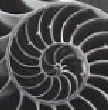
Problems for
Intermediate Methods in Theoretical Physics
Edward F. Redish
 |
Problems for Edward F. Redish |
In our work in class so far we have used vector spaces to describe the position of objects in space, other physical quantities built from position such as velocity or momentum, and physical quantities that transformed in some way like position such as force or magnetic field. We have built up larger spaces by describing the motion of one particle in many dimensions or many particles (so far) in one dimension. As a result of these two different examples, we have created a mathematical abstractions -- a linear (vector) space -- that obeys certain properties. Once we have these properties, we can apply these ideas to other examples, effectively finding cases in which the analogy to motion of a particle in many dimensions (or of many particles in one dimension) is so good that we can use the same math. One example that will turn out to be of great importance, both in wave theory in elastic media and in quantum physics, is the case of functions. We'll begin by working out a simple example.
Consider the set of functions consisting of the sum of the two functions sin θ and cos θ:
where a and b are arbitrary complex numbers. We can associate this function with a vector

Prove that this set of functions forms a linear space according to the definition of a linear space given in class.
| University of Maryland | Physics Department | Physics 374 Home |
|---|---|---|
 |
 |
 |
Last revision 21. October, 2005.